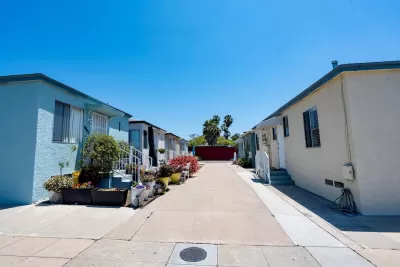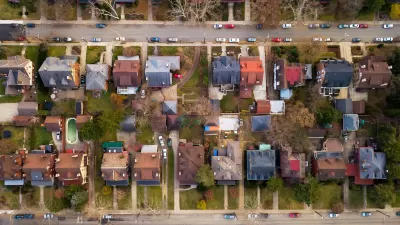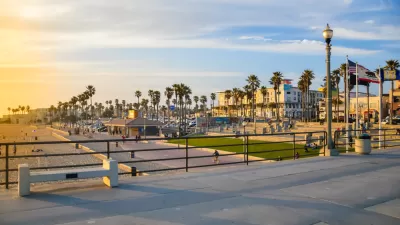Homeowners in Southern California are starting to take advantage of a state law that allows lot splitting and higher density in residential areas in an effort to increase housing supply and affordability.

Three years after a law allowing lot splitting was passed in California, San Diego is starting to see its effects as homeowners sell off or build on previously unused parts of their properties.
According to a KPBS article by Andrew Bowen, “SB 9, or the California HOME Act, allows homeowners to split their lots in two and build up to two homes on each parcel — even if local zoning restricts the property to a single detached house.”
The bill’s passage in 2021 was considered a victory for housing advocates who want to lower barriers to building more housing, but cities and homeowner groups continue to fight the law in courts and through more creative means.
“It does take a while for the general public to know about the law, and for planning departments to adjust to state laws,” says Muhammad Alameldin, a policy associate at UC Berkeley's Terner Center for Housing Innovation. For the law to make an impact on the housing supply, builders who specialize in small-scale infill can help homeowners understand the process and access resources to lower the costs of construction, Bowen writes. Cities including Sacramento and Los Angeles are also working to eliminate barriers and reduce costs for homeowners in other ways, such as issuing pre-approved plans for accessory dwelling units (ADUs).
FULL STORY: Three years into California duplex law, San Diego homeowners start to cash in

Trump Administration Could Effectively End Housing Voucher Program
Federal officials are eyeing major cuts to the Section 8 program that helps millions of low-income households pay rent.

Planetizen Federal Action Tracker
A weekly monitor of how Trump’s orders and actions are impacting planners and planning in America.

Ken Jennings Launches Transit Web Series
The Jeopardy champ wants you to ride public transit.

Crime Continues to Drop on Philly, San Francisco Transit Systems
SEPTA and BART both saw significant declines in violent crime in the first quarter of 2025.

How South LA Green Spaces Power Community Health and Hope
Green spaces like South L.A. Wetlands Park are helping South Los Angeles residents promote healthy lifestyles, build community, and advocate for improvements that reflect local needs in historically underserved neighborhoods.

Sacramento Plans ‘Quick-Build’ Road Safety Projects
The city wants to accelerate small-scale safety improvements that use low-cost equipment to make an impact at dangerous intersections.
Urban Design for Planners 1: Software Tools
This six-course series explores essential urban design concepts using open source software and equips planners with the tools they need to participate fully in the urban design process.
Planning for Universal Design
Learn the tools for implementing Universal Design in planning regulations.
Heyer Gruel & Associates PA
Ada County Highway District
Institute for Housing and Urban Development Studies (IHS)
City of Grandview
Harvard GSD Executive Education
Toledo-Lucas County Plan Commissions
Salt Lake City
NYU Wagner Graduate School of Public Service





























